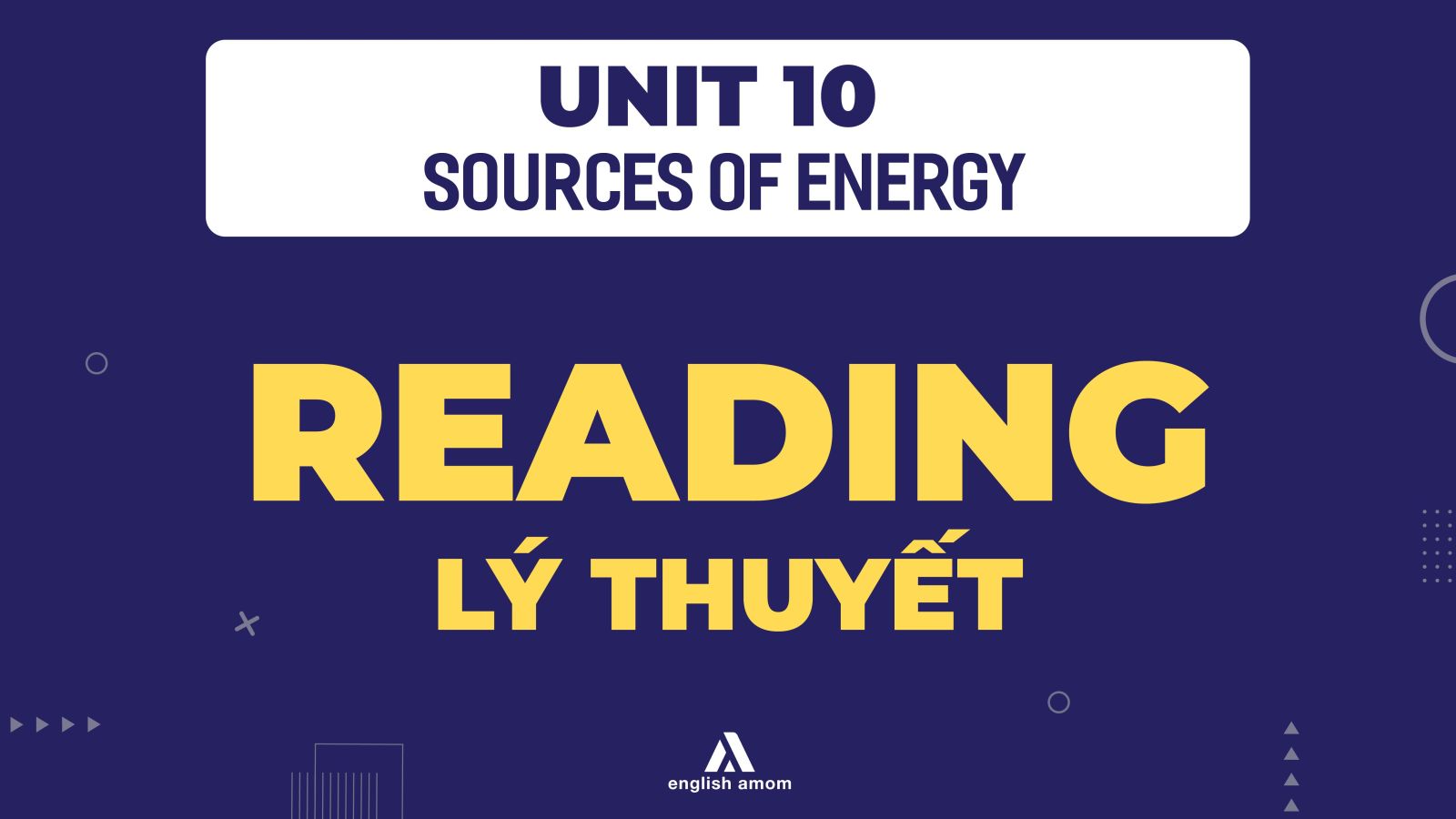
► Kênh hỏi đáp và giải thích thắc mắc kiến thức MIỄN PHÍ → truy cập LINK NHÓM: ENGLISH AMOM
► Kênh YOUTUBE hệ thống toàn bộ bài giảng CLIPS: truy cập LINK: ENGLISH AMOM CHANNEL
► Kênh TIKTOK: ENGLISH AMOM
1) Work in pairs. Discuss the following questions.
1. What are the main sources of energy in Viet Nam?
2. What type of energy sources will be used in the future?
ĐÁP ÁN:
1. Hydro.
2. Nuclear, wind, solar.
2) Read the text below and check your ideas.
Dear guests, I'd like to talk to you today about renewable and non-renewable energy.Fossil fuels are non-renewable energy sources. They include oil, coal, and natural gas. They can be used to create energy, generate electricity, or drive big machinery. Unfortunately, they are harmful to the environment. Viet Nam still relies mostly on non-renewable energy sources, however, hydro power is increasingly used here too. Hydro and nuclear power can generate a great deal of energy. They are renewable and plentiful. However, hydro power is limited because dams cannot be built in certain areas. Nuclear power can provide enough electricity for the world's needs, but it is dangerous. The sun and the wind are other alternative sources of energy. The wind turns turbines to make electricity. Solar power can be converted into electricity. It can be used to heat or cool our houses. Although there are some disadvantages, these alternative energy sources can offer abundant amounts of clean, safe electricity. They will be valued more and more in the future in Viet Nam. |
3) a. Match the verbs with the nouns.
|
1. create |
a. machinery |
|
2. drive |
b. turbines |
|
3. generate |
c. energy |
|
4. turn |
d. houses |
|
5. heat |
e. electricity |
ĐÁP ÁN:
| 1-c | 2-a | 3-e | 4-b | 5-d |
3) b. Answer the questions
1. How many types of energy sources are mentioned in the text? What are they?
2. What are the disadvantages of hydro and nuclear power?
3. Why do you think the wind and the sun are called alternative sources of energy?
4. What types of energy does Viet Nam use most?
5. What does the professor think Viet Nam will use more in the future?
ĐÁP ÁN:
1. Two. They are renewable and non-renewable.
2. Hydropower is limited because dams can not be built in certain areas. Nuclear power is dangerous.
3. Because they are natural sources of energy and we use them instead of non-renewable sources.
4. We use non-renewable sources of energy the most but we are increasingly using hydropower.
5. He thinks Vietnam will use the wind and the sun as alternative sources of energy in the future.

